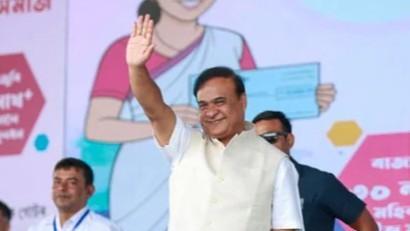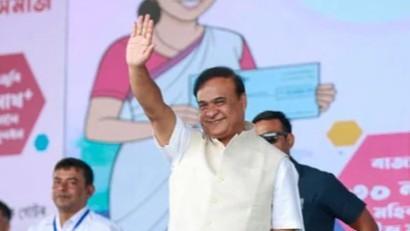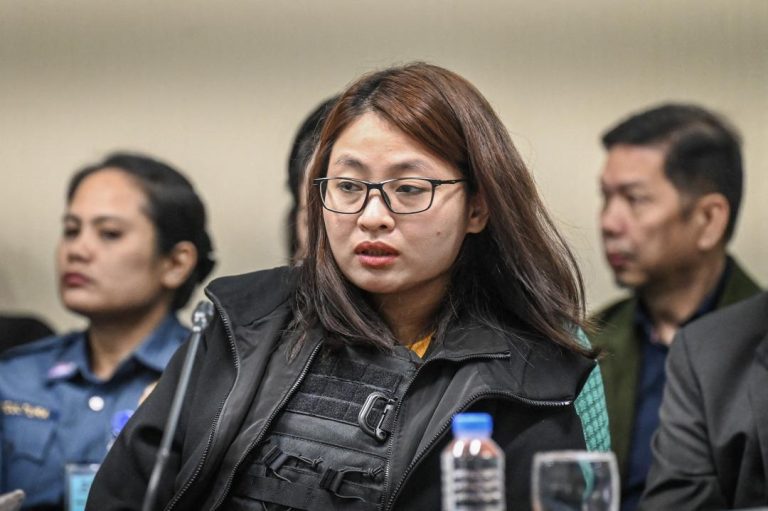
Assam CM helped Nitish work out ₹10,000 for women scheme: Report
In a significant development, it has been reported that a large part of the credit for Bihar’s scheme to give ₹10,000 to women goes to Assam Chief Minister Himanta Biswa Sarma. According to NDA leaders, Sarma played a crucial role in shaping the Mukhyamantri Mahila Rojgar Yojana, a program aimed at providing financial assistance to women in the state. This revelation has sparked interest and curiosity among political observers and citizens alike, highlighting the collaborative efforts between state governments in addressing social and economic issues.
The report suggests that Sarma sent his bureaucrats to Bihar around five months ago, following a request from the Nitish Kumar government. The team of bureaucrats made a presentation before officials in Bihar, outlining the ‘Jeevika ₹10,000 model’, which was later incorporated into the Mukhyamantri Mahila Rojgar Yojana. This model, it appears, was instrumental in shaping the final scheme that was launched by the Bihar government.
The Mukhyamantri Mahila Rojgar Yojana is a landmark initiative aimed at empowering women in Bihar by providing them with financial assistance to pursue their entrepreneurial aspirations. The scheme, which promises to give ₹10,000 to women, is expected to benefit thousands of women across the state, enabling them to start their own businesses, expand existing ones, or invest in vocational training.
The role of Assam Chief Minister Himanta Biswa Sarma in shaping this scheme is a testament to the collaborative spirit between state governments in addressing common social and economic challenges. By sharing knowledge, expertise, and best practices, state governments can leverage each other’s strengths to design and implement effective programs that benefit their citizens.
The ‘Jeevika ₹10,000 model’ presented by Sarma’s team is reportedly based on a similar program implemented in Assam, which has shown promising results. By adapting this model to the specific needs and context of Bihar, the Nitish Kumar government has demonstrated a willingness to learn from others and adopt innovative solutions to address the state’s development challenges.
This development also highlights the importance of interstate cooperation and knowledge-sharing in India’s federal system. As state governments grapple with complex social and economic issues, they can benefit greatly from sharing experiences, expertise, and best practices with each other. By doing so, they can avoid reinventing the wheel, reduce duplication of efforts, and accelerate the pace of development.
The success of the Mukhyamantri Mahila Rojgar Yojana will depend on various factors, including its effective implementation, outreach, and impact on the ground. However, the fact that the scheme has been shaped by a collaborative effort between two state governments is a positive sign, indicating a willingness to think beyond party lines and work towards a common goal.
As the Indian economy continues to grow and evolve, it is essential that state governments work together to address common challenges and leverage each other’s strengths. The role of Assam Chief Minister Himanta Biswa Sarma in shaping the Mukhyamantri Mahila Rojgar Yojana is a significant example of this collaborative spirit, and it is hoped that other state governments will follow suit in the future.
In conclusion, the report that Assam CM helped Nitish work out ₹10,000 for women scheme is a significant development that highlights the importance of interstate cooperation and knowledge-sharing in India’s federal system. As state governments continue to grapple with complex social and economic issues, it is essential that they work together to design and implement effective programs that benefit their citizens. The success of the Mukhyamantri Mahila Rojgar Yojana will be closely watched, and its impact on the lives of women in Bihar will be a testament to the power of collaborative governance.






